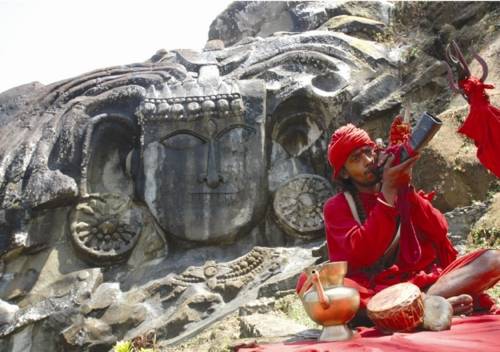Unakoti (Tripura)

Unakoti is located close to Kailasahar, the district headquarters of Northern Tripura. It is a Shaiba pilgrimage site and dates back to the period between the 7th and 9th centuries if not earlier. The marvelous rock carvings, murals with their primitive beauty, waterfalls are not to be missed.
Unakoti means one less than a crore and it is said that this many rock cut carvings are available here. As per Hindu mythology, when Lord Shiva was going to Kashi along with one crore gods and goddesses he made a night halt at this location. He asked all the gods and the goddesses to wake up before sunrise and proceed for Kashi. It is said that in the morning, except Shiva himself, no one else could get up so he set out for Kashi alone cursing the others to become stone images. As a result we have one less than a crore stone images and carvings at Unakoti. These carvings are located at a beautifully landscaped forest area with green vegetation all around which adds to the beauty of the carvings.

The carvings at Unakoti relate to the Hindu pantheon. It is the largest bas-relief structure in India. The images found at Unakoti are of two types namely rock - carved figures and stone images. Among the rock cut carvings, the central Shiva head and gigantic Ganesha figures deserve special mention. The central Shiva head known as ‘Unakotiswara Kal Bhairava’ is about 30 feet high including an embroidered head-dress which itself is 10 feet high. On each side of the head dress of the central Shiva, there are two full size female figures - one of Durga standing on a lion and another female figure on the other side. In addition, three enormous images of Nandi Bull are found half buried in the ground.
The rock cut images of Unakoti include Mataikatar, or the Great God. However, a number of detached stone sculptures recovered from the site resemble the 11th- 12 century style and probably mark a change to the standard Brahmanical iconographic norms.
Every year a big fair popularly known as ‘Ashokastami Mela’ is held in the month of April which is visited by thousands of pilgrims.


